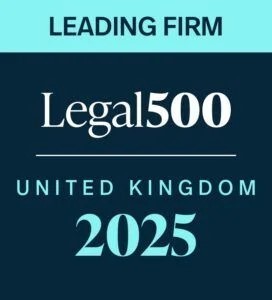The Scottish Beauty Industry is currently lacking regulations, especially when it comes to non-surgical cosmetic procedures (NSCPs), such as Botox, lip filler, and microblading.
Healthcare Improvement Scotland (HIS) was established in 2011 as a body responsible for setting standards for all independent healthcare clinics to follow. HIS ensures standards by way of inspections within the provider’s premises. The providers must register with HIS. However, the beauty industry remains largely unregulated.
A survey which was carried out by BABTAC - Insurance and Membership Association for the Beauty Industry in 2020 revealed that only 38% of those who receive beauty treatments knew the industry was unregulated.
Calio Claims represents clients across Scotland in cases involving negligent cosmetic procedures. Contact us today if you believe you may have a claim.
What are the current rules for non-surgical cosmetic procedures in Scotland?
In 2016, the Scottish Government began reviewing the rise in non-surgical beauty treatments.
Firstly, registered practitioners were given a timeframe to register with HIS, meaning they are subject to annual inspections and regulations.
Secondly, the attention was turned to clinics providing laser treatments by unlicensed professionals.
What new regulations will affect cosmetic procedures in Scotland?
In short, yes. There are various changes that are being proposed to regulate the beauty industry.
The Scottish Government is currently working on a bill to introduce regulations to improve the safety of non-surgical cosmetic procedures within the beauty industry. The Non-surgical Cosmetic Procedures Bill is expected to be introduced in early 2026.
The proposed Bill will focus on NSCPs such as Botox, laser treatments, fillers, and weight loss injections, but to name a few.
The overarching goal is to establish a clear standard for providers, ensuring adequate training is undertaken before carrying out work professionally.
Jenni Minto, Minister for Public Health and Women’s Health, advised that the Government “wants to make sure procedures are carried out by appropriately qualified and skilled practitioners so that clients have peace of mind.”
The new proposals would ban ‘high-risk’ procedures being performed by those who are not appropriately qualified healthcare professionals.
In summary, the proposed changes will permit non-medical professionals to carry out low- or medium-risk procedures, provided they have received appropriate training, are supervised, and adhere to the proposed framework. High-risk procedures will remain the responsibility of qualified medical professionals, such as doctors/dentists.
Frequently Asked Questions
You can claim for scarring, infections, nerve damage, allergic reactions, burns, or any complications caused by poor technique or lack of care.
Yes, keep medical records, treatment receipts, photographs of injuries, and any messages from the clinic to support your claim.
You may claim against the practitioner, clinic, or beauty business responsible for the negligent treatment.High-risk cosmetic procedures should be performed by qualified, registered medical professionals. Laws vary for low- and medium-risk treatments.
You usually have three years from the date of the procedure or when you became aware of the injury to start your claim.
Contact our Negligent Beauty Treatment Claims Lawyers
If you've experienced injury, scarring, infection, or unexpected side effects because of a botched or negligent cosmetic treatment such as Botox, fillers, lasers or microblading, Calio Claims can help.
Our medical negligence solicitors understand the distress these procedures can cause and how important it is to seek justice and financial compensation. Speak to our team for clear advice on your rights and your prospects for making a successful claim. Call us on 0800 988 8082 or complete our simple online enquiry form and we’ll get back to you promptly.




